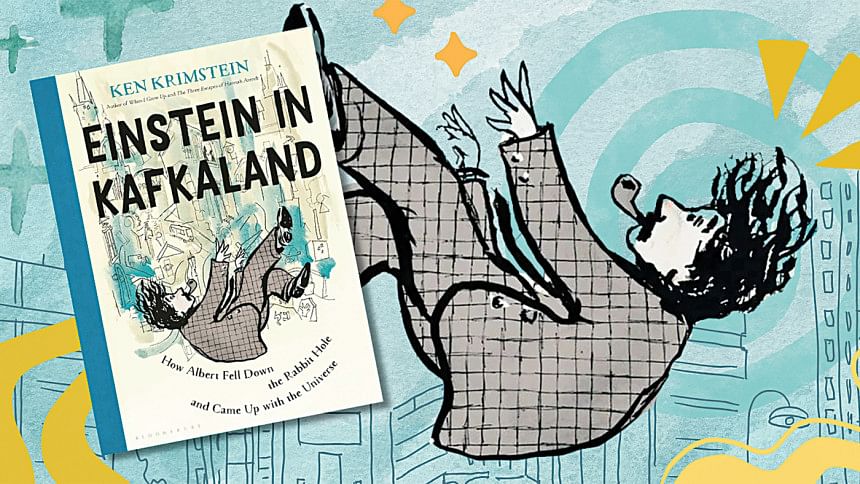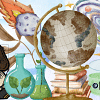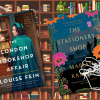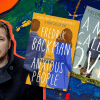Down the rabbit hole of science and art

The city of Prague, now the capital of the Czech Republic, was once the breeding hotspot of the 20th century's greatest writers, scientists, scholars, and activists. Amongst Prague's intellectual elite would be the household names of Kafka, the anguished native son, and Einstein, the reluctant and perplexed immigrant, whose destinies would be entwined with the city itself in the pivotal years of both their trajectories.
Albert Einstein and Franz Kafka remain exemplary luminaries in their respective fields of science and art. Einstein, renowned for his discovery and articulation of the theory of relativity, is a celebrity in pop-culture, with his name being synonymous with the word genius. The brooding Kafka is a trailblazer in world literature whose name is entwined with the unpleasant and deeply jarring literary genre that we now refer to as "Kafkaesque". These towering figures present a bygone era of intellectual flourishing before the destruction of European Jewry in World War II.
Ken Krimsten's charmingly dizzying graphic novel, Einstein in Kafkaland: How Albert Fell Down the Rabbit Hole and Came Up With the Universe, delves into the time when Einstein and Kafka met in Prague in 1911-1912. Deep diving into personal archives, diaries, letters, and personal testimonials of Einstein and Kafka, Krimsten opens a portal to a time of intellectual flowering amidst individual anxious travails of self-loathing, self-discovery, and self-understanding.
Narrated by the famed skeleton of Prague's astronomical tower, the imagery employed in the graphic novel is drawn in shades of aqua blue, white, and black. The story opens where the patent clerk, Einstein, arrives with his wife, Mileva, and his two sons, hoping for an intellectual breakthrough in what will later come to be known as the famed "theory of relativity". Aside from that, the TIME magazine crowned "person of the century" has to save two other vital aspects of his life: his marriage and prospects of a good job. Kafka—the patron saint of anxiety for many of us, still a far cry from being the "prophet of literature"—is a struggling 28-year-old insurance executive tired of the monotonous routine of modern life. This is during the same period that Kafka starts to pen his iconic short story, "The Judgment", that would propel him to literary superstardom.
Owing to frequent salon gatherings of Europe's foremost intellectuals, who happen to be mostly Jewish, Krimsten captures the philosophical undertones of the period with both of these two geniuses searching for "the truth", which means letting go of the past and challenging their own masters and the idea of "the creator" itself. Peering deep into their personal lives, Krimsten fleshes out the deep points of consternation in the lives of the two geniuses. These include interesting epithets in both their lives that are often glossed over. For Einstein, it would be tackling his arch nemesis, Max Abraham; the overbearing shadow of the loss of his first child, Lieserl; and his faltering marriage. For Kafka, whose early years were shaped under the domineering shadow of his father, it is in his friendship with Max Brod that he finds a safety valve of trust and understanding. Brod is the man responsible for safeguarding Kafka's works after being ordered by Kafka himself to burn them after his death.
While Kafka does feature in the story, the main character is Einstein himself. Drawing on symbolic gestures inspired by Lewis Carroll's Alice in Wonderland (1865)—from surreal treatments of time to whimsical character designs—Krimsten takes us on Einstein's journey to genius. Along the way, we encounter Einstein in emotive dialogues with God and Euclid, Kafka appearing as an enigmatic Cheshire Cat, and the imaginary expanse of a scientist grappling with questions of the universe, art, and logic. It's a captivating journey that blurs the lines between science and art, inviting readers into the mind of a genius through a wonderland of intellectual discovery.
The novel offers a deeply meditative exploration of the worlds of science and art, drawing readers into the same rabbit hole as Einstein, in search of something quite bigger than ourselves. In doing so, Krimsten once again establishes the graphic novel as a literary genre that synthesises the power of thought, art, and imaginative reasoning.
Israr Hasan is currently working as researcher in a public health institute.

 For all latest news, follow The Daily Star's Google News channel.
For all latest news, follow The Daily Star's Google News channel. 







Comments